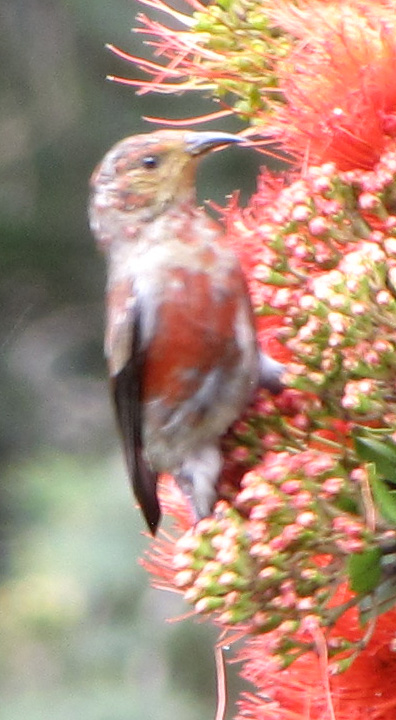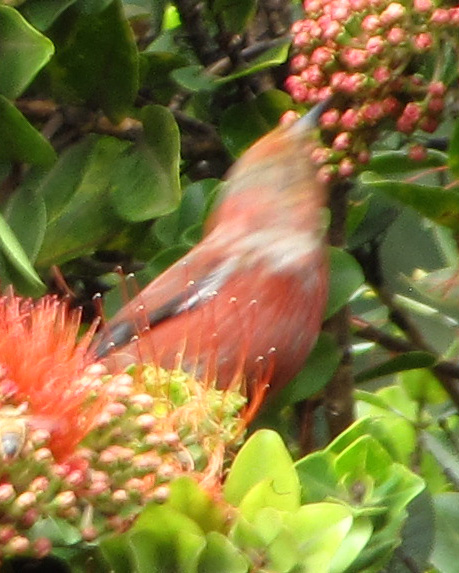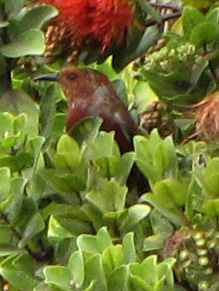An Unexpected Visitor
September 2nd, 2015 Roughly a quarter century ago I planted a native ‘ohi’a lehua tree in my garden. That tree is now fifteen feet tall, and blooms abundantly every few months. Honeybees always come to feed on the nectar — but I never expected to see a native ‘apapane feeding there. ‘Apapane are native forest birds, bright red and black in their adult coloration.
Roughly a quarter century ago I planted a native ‘ohi’a lehua tree in my garden. That tree is now fifteen feet tall, and blooms abundantly every few months. Honeybees always come to feed on the nectar — but I never expected to see a native ‘apapane feeding there. ‘Apapane are native forest birds, bright red and black in their adult coloration.
Hawaii has suffered extreme environmental changes since humans first arrived here, with the pace of change only accelerating after westerners arrived. Today, nearly all the bird and plant life at lower elevations are introduced species. Native forests generally exist only at higher elevations, and often only in highly protected areas such as Haleakala National Park here on Maui. The native forest bird population has suffered even more, with many species already extinct. One reason for their decline is that they have no natural immunity to avian malaria, which is spread by mosquitoes.
Aside: humans are not susceptible to avian malaria, so no worries there. Also, mosquitoes are yet another non-native species. They were accidentally introduced around 150 years ago.
‘Apapane are one of the few native forest birds that continue to do fairly well in higher elevation forests — perhaps 6,500 feet up to 8,500 feet, which is above the range of the mosquito species here in the islands. I live at a much lower elevation than that, but when I arrived home from Worldcon on August 24 — a cool, cloudy afternoon — I opened the blind and was startled to see the ‘ohi’a in massive bloom, and even more surprised to see an ‘apapane feeding on the flowers! Never, in more than a quarter of a century, have I seen one of the little birds here.
At first I couldn’t believe my eyes, but the photos prove it: the visitor to our ‘ohi’a tree was a juvenile ‘apapane, still working on its adult coloration. I’m sharing the photos below not because of their quality (obviously!), but because this event was so astonishing.

The behavior, size, and coloration all indicate that this is a juvenile ‘apapane, still working on its adult coloration.

A photo blurred with motion, but still showing the ‘apapane’s coloration.

A portrait during a moment of rest.

Taking off again! The little honeycreeper moved with amazing speed among the blossoms.
I haven’t seen the ‘apapane since that day. I hope it comes back. I hope it’s able to survive at this elevation. It’s a very welcome visitor.
Posted on: Wednesday, September 2nd, 2015 at 6:00 am
Categories: Hawaii.
Tags: apapane, native birds







